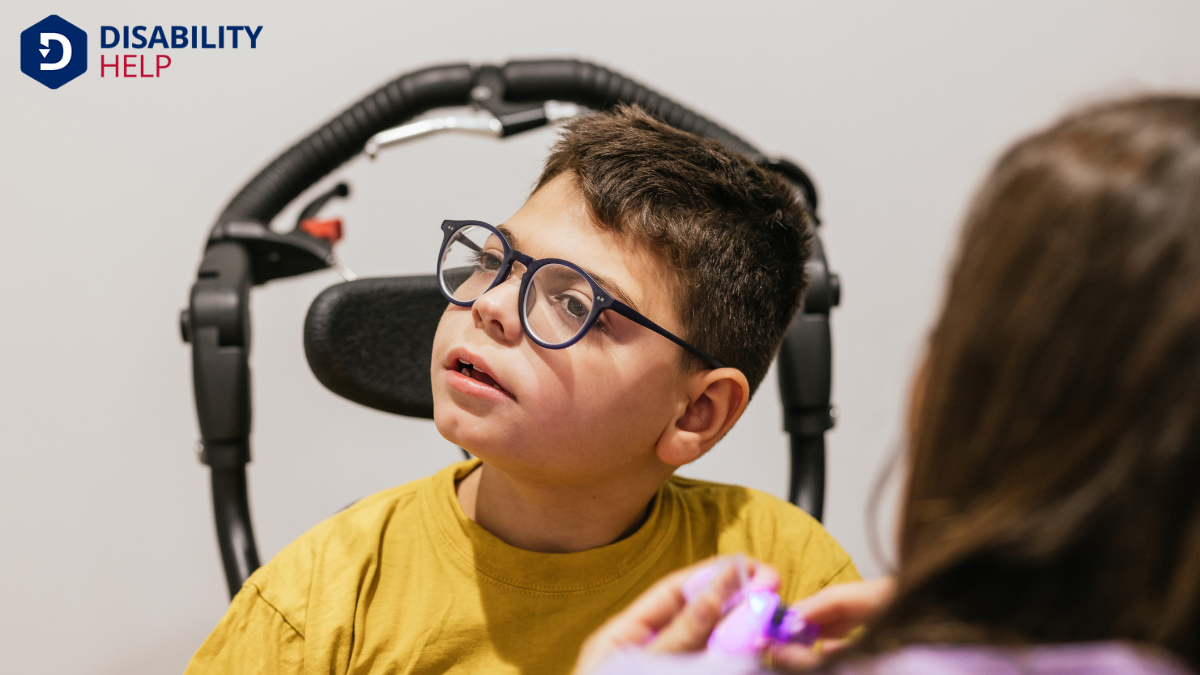Let's explore whether AAC is a temporary or permanent solution. We'll consider various factors, like individual progress and goals, and how they shape the AAC journey. Some may use AAC as a bridge to verbal communication, while others might rely on it throughout their lives. It's important to understand these nuances and recognize that every AAC user has a unique path. So, how do we determine what’s right for each individual?
Key Takeaways
- AAC use can be temporary or permanent, depending on individual communication needs and conditions.
- Individuals with permanent speech difficulties may rely on AAC systems lifelong.
- Short-term AAC use is possible for those expected to gain verbal communication skills over time.
- Regular reassessment ensures AAC aligns with users' evolving communication abilities.
- Technological advancements may influence the duration and necessity of AAC use.
Understanding AAC and Its Purpose
Although some may not be familiar with the term, Augmentative and Alternative Communication (AAC) plays an essential role in enhancing communication for individuals who've difficulty with verbal speech.
We acknowledge AAC to bridge communication gaps, allowing those with speech impairments to express their thoughts, needs, and emotions more effectively. It's essential we recognize that AAC isn't a one-size-fits-all solution; it encompasses a wide range of tools and strategies tailored to individual needs.
From simple gestures and picture boards to advanced speech-generating devices, AAC provides diverse options.
By incorporating these tools, we empower individuals to communicate more freely and participate actively in their communities.
Let's embrace AAC's potential to transform lives, recognizing its significance in fostering meaningful connections.
Factors Influencing AAC Duration

Let's look at how the duration of AAC use is influenced by several key factors.
First, evaluating individual communication needs helps us determine if AAC is a short-term or long-term solution.
We'll also consider the user's progress and how technological advancements might impact their reliance on AAC over time.
Communication Needs Assessment
Determining whether AAC (Augmentative and Alternative Communication) is a temporary or permanent solution begins with a thorough communication needs assessment.
We need to evaluate the individual's communication environment and daily demands. We should consider factors like the user's age, communication partners, and typical settings. By asking ourselves questions about how often they need to express themselves and the complexity of messages required, we gain insight into their needs.
It’s equally important to assess their physical and cognitive abilities, as these will influence AAC device selection.
Let’s remember that every user is unique, and their communication journey is personal. By focusing on these aspects, we can better tailor AAC solutions that truly meet their needs, whether for a short time or indefinitely.
User's Progress Evaluation
Evaluating a user's progress is essential in determining how long they may need AAC support. We begin by observing improvements in communication skills. Are they expressing needs more effectively? Can they interact socially with greater ease? These indicators help us assess whether continued AAC use is necessary or if adjustments are needed.
We also consider the user's comfort and proficiency with the AAC system. If they show increased fluency and independence, it might suggest a reduced reliance over time.
Moreover, frequent reassessment guarantees that the AAC strategies remain aligned with their evolving needs. By closely monitoring changes, we can tailor interventions appropriately. Our goal is to support the user's communication journey, providing the necessary tools for as long as they need them.
Technological Advancements Impact
As we assess a user's progress with AAC, we must also consider how technological advancements shape their journey. Innovations in AAC devices offer enhanced communication options, making them more intuitive and accessible.
These tools evolve rapidly, and they can profoundly affect whether AAC use is temporary or permanent. When new features or updates make devices easier to use or more aligned with a user's needs, individuals might rely on AAC longer.
Let's think about how these advancements can reduce communication barriers. As technology integrates more seamlessly into daily life, it supports users in achieving greater independence.
Consequently, the duration of AAC usage often hinges on how effectively these technologies meet evolving needs. We're in an era where technology continuously redefines communication possibilities for AAC users.
AAC as a Stepping Stone to Speech
While some may view Augmentative and Alternative Communication (AAC) as a permanent solution, it's actually a powerful tool that can serve as a bridge to natural speech.
When we introduce AAC, we're not just offering a means of communication; we're fostering confidence and language skills. AAC allows users to express their thoughts, desires, and emotions, laying a foundation for speech development. As users become more comfortable expressing themselves, they might experience increased motivation to explore verbal speech.
We should remember that each individual’s journey is unique. AAC systems can be tailored to meet personal needs, providing a customized path to progress.
Lifelong Use of AAC Systems
For many individuals, AAC systems become indispensable lifelong companions in their communication journeys. We often rely on these systems to express ourselves, connect with others, and participate fully in various aspects of life. Lifelong use of AAC isn't uncommon for those who've conditions that affect speech permanently, such as cerebral palsy or certain genetic disorders. These systems provide a consistent and reliable means of communication.
It's important to understand that AAC systems aren't just tools; they're integral parts of daily life. They evolve with us, adapting to our changing needs and technology advancements.
Whether it's a high-tech device or a simple picture board, AAC systems empower us to share our thoughts and feelings, ensuring our voices are always heard.
Perspectives From AAC Users and Families

As we explore the perspectives of AAC users and their families, we see how long-term integration shapes daily life and communication.
Shifting between different methods can be challenging, but it also offers opportunities for growth. Families play an essential role in supporting and adapting to these changes, ensuring communication remains effective and personalized.
Long-Term AAC Integration
Many AAC users and their families find that integrating AAC into their daily lives requires patience and adaptability. We need to embrace the learning curve that comes with new technologies and communication strategies.
It’s important to create an environment where AAC is seamlessly part of our routine, not just a tool for specific situations. We’ve discovered that consistency is key. Incorporating AAC into everyday conversations, whether at home, school, or social settings, helps us communicate effectively and feel more connected.
Our journey with AAC involves ongoing learning and adjustment, but the benefits are profound. The sense of empowermentThe process of gaining control, authority, and power over one’s life, often used in the context of... and independence it brings to users enriches our lives, fostering confidence and enhancing relationships.
We’re building a future where communication is accessible for all.
Transitioning Between Communication Methods
While shifting between communication methods can be challenging, it's an integral part of our experience with AAC. We recognize that changing isn't just about switching tools; it involves adapting to new ways of expressing ourselves and ensuring that our needs are met. Each method has its strengths, and we often choose based on context—sometimes preferring AAC for clearer communication and other times using speech or gestures for quicker interactions.
From our perspective, flexibility is key. It allows us to navigate different social situations effectively.
We might encounter obstacles, like device malfunctions or unfamiliar environments, but these changes empower us to be more resilient. By embracing multiple methods, we enhance our ability to connect with others and maintain our sense of independence.
Family Support and Adaptation
Understanding the essential role family support plays in adapting to AAC systems can considerably shape our experience. As we navigate this journey, our families' encouragement and involvement are vital. When they actively participate, we feel more confident and motivated to use AAC devices.
Open communication among family members fosters a supportive environment, allowing us to express ourselves freely. Families might initially face challenges, but embracing learning opportunities together can ease the adaptation process.
By attending training sessions and staying informed, they help us bridge communication gaps. Their patience and understanding reassure us that we're not alone.
Ultimately, their support transforms AAC from a tool into a lifeline, empowering us to connect with the world. Let's move forward, knowing our families are alongside us.
Adapting AAC to Evolving Needs
As we explore the journey of augmentative and alternative communication (AAC), it's clear that adapting these tools to meet evolving needs is crucial for effective communication.
Our AAC systems should grow alongside the individuals using them, considering changes in their abilities, preferences, and environments. We need to regularly reassess and customize these systems, guaranteeing they remain relevant and supportive.
Let's embrace flexibility and creativity in updating vocabulary and features. For instance, as individuals develop more complex thoughts, their AAC devices might need additional words or new ways to express emotions and ideas.
Technological advancements also offer opportunities to enhance AAC tools, making communication more intuitive and personalized. Together, we can guarantee these systems continue to serve their purpose effectively.
Setting Realistic Expectations for AAC Use
Recognizing the importance of evolving our AAC systems, we also need to set realistic expectations for their use. It's essential to understand that AAC isn't a one-size-fits-all solution. Each individual's communication journey is unique, and progress may vary.
We should anticipate a period of learning and adjustment, both for the user and those interacting with them.
Let's remember that AAC can empower users by providing a voice they mightn't have had otherwise. However, it requires patience, practice, and ongoing support.
We shouldn't expect immediate fluency or a solution to all communication challenges. Instead, we aim for meaningful interactions and gradual improvement.
Conclusion
In our journey with AAC, we’ve learned that its role can be both temporary and permanent, depending on individual needs. Whether it’s a stepping stone to speech or a lifelong communication tool, AAC adapts to our evolving circumstances. Let’s embrace these unique journeys by regularly reassessing and adjusting the tools, setting realistic expectations, and listening to the voices of AAC users and their families. Together, we can guarantee AAC remains a supportive and empowering resource.






